Cloudburst in Copenhagen 2 July 2011, efforts and consequences
The cloudburst in the capital on Saturday 2 July 2011 paralyzed large parts of the city's infrastructure for several days.
In just an hour and a half, 100-150 mm of rain fell.
For lots of houses, this meant ingress of water from streets and alleys and backflow of contaminated water from the sewer systems. Lots of movable property was destroyed and it is now about avoiding further losses from damage to the buildings and negative impact on the general state of health.

Example from an ordinary home
In the south-west quarter is an ordinary family house, built in the sixties and equipped with a full basement – a lovely house with plenty of space for a whole family.
Normally, an ordinary family living here uses around 150 m3 of waterworks water per year.
On Saturday 2 July 2011, the same amount of water was delivered back from the floodgates to the family's house and grounds in just an hour and a half – no drainage system can handle that and the consequence was a ruined basement!
Sewage from the toilet and drain seeped in and in a short time the whole basement was flooded with foul smelling sewage mixed with dead rats!
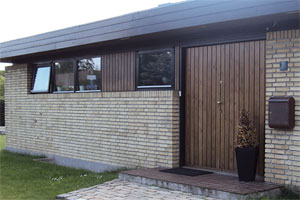
The residents initially tried to combat the damage and save movable property to the greatest extent possible. Unfortunately, even at this early stage, it had a very direct impact on the state of health in the house. Some of the house's residents contracted stomach ulcers as a direct consequence of contact with the contaminated sewage.
When contacting the insurance company on Monday 4 July, they were given the green light to initiate a repair via Skadeserviceselskabet ASAP. By that time, the intruded sewage had been drawn back into the drains and what remained were the unsightly and foul-smelling residues that the sewage had left behind.
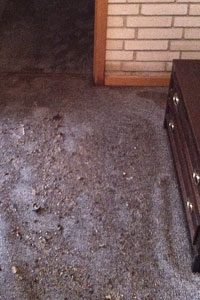


Pictures after the flood |
Preparation and securing
The claims service company ASAP by Flemming Servais came to the scene. Flemming chose to treat the entire affected area with the product first ProtoxHysan. The purpose of the ProtoxHysan application is to eliminate disease-causing bacteria and viruses and to reduce odor nuisances.
The risk of contamination was thus immediately minimized for the family and for ASAP's claims service personnel. The members of the family were able to announce shortly afterwards that the odors were now very limited.
Workflow
In order to ensure the drying out of the basement, all fixtures were removed and also skirting boards, door steps, door jambs and plaster walls were removed to avoid hotbeds for continued mold and bacteria growth. Then ProtoxHysan is sprayed on the exposed areas and the product is worked in with a brush - otherwise in accordance with the well-known "Protox method", as it is also known from mold remediation.

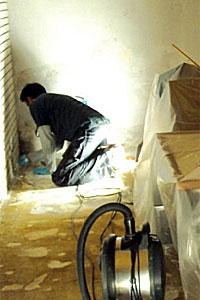
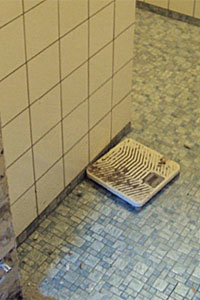
All organic parts are removed to avoid further growth |
Dehumidifiers and fans were installed and will dry out the basement in the coming weeks. Moisture content in the basement's building materials is continuously measured. The concrete floors in the basement are scraped off with a concrete planer to remove residues of organic carpet glue and holes are drilled into the floor to measure moisture content with probes.
Control
Flemming Servais from ASAP has used the quick test: Proclean to determine whether there are still impurities/protein residues from the sewage. Tests are carried out at selected locations, which gives a good indication of how the cleaning and disinfection is progressing.

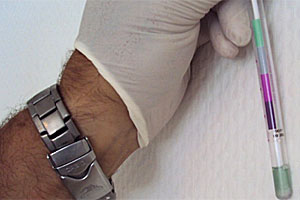
Check and test |
When the basement has been dehumidified, final disinfection of the area must be carried out with Hysan and tested for any remains of disease-causing bacteria.
Is it happening again?
The cloudburst is the most powerful in more than 50 years, according to DMI, but it is also suggested from DMI that it will not necessarily be 50 years before the next cloudburst delivers similar amounts of water. Do we then have to accept that great values are lost again?
There are systems that can prevent the backflow of sewage – non-return valve systems and pump wells are known methods. Improved public planning and construction of the drainage systems is also underway.
The costs will probably have to be borne by both private and public coffers and it will be expected that some regulation in the area will take place via the insurance companies' policy conditions; for, for example, dwellings with a basement.
In any case, quick action is crucial for the extent of the damage – and with the right tools and working methods, we can, after all, ensure limited damage to buildings and health.
Technique:
- ProtoxHysan, disinfectant and deodorizer, Protox
- Gardena garden sprayer used for laying, XL construction market
- Dehumidifiers, Munters, sorption dehumidifiers 21 l/day, Munters
- Proclean, rapid test, Protox
- Moisture meters, insertion probe meters and capacitance meters, Buhl and Bønsø
- Various coverings and hand tools, XL construction market


